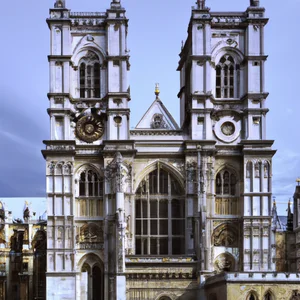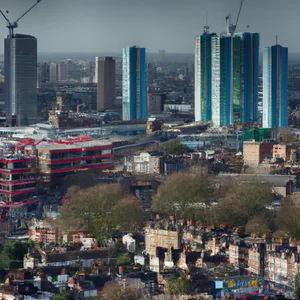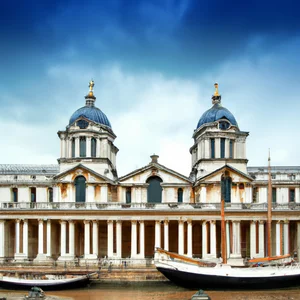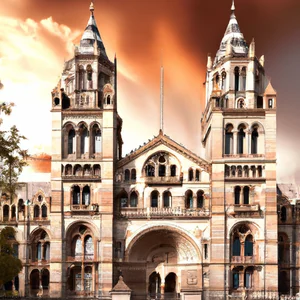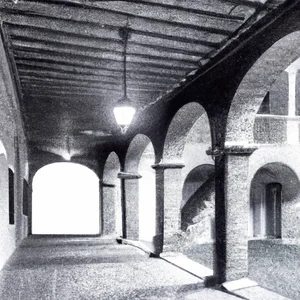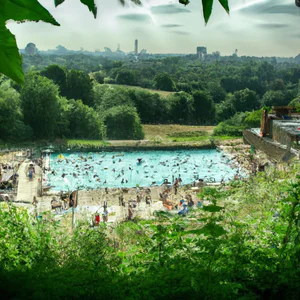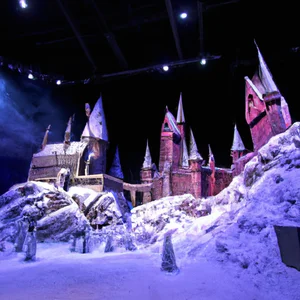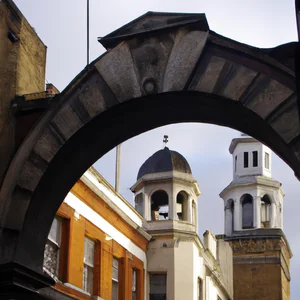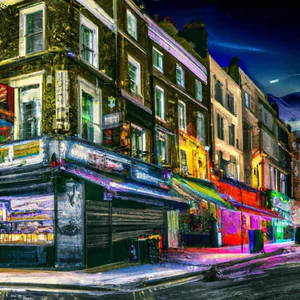Book your experience
Open House London: The 50 buildings not to be missed during the open architecture weekend
Hey, folks! Have you heard of Open House London? It’s one of those weekends you won’t want to miss. Basically, they give you the opportunity to peek inside as many as 50 buildings that are usually not open to the public. It’s like a trip to a museum, but around the city!
Imagine walking through the streets of London and discovering historic buildings, modern skyscrapers and maybe even some hidden jewels that you never thought you’d see. I remember last year I entered a building that looked like something out of a James Bond film, with an amazing view of the Thames. And believe me, it was truly breathtaking!
Now, I don’t want to sound too enthusiastic, but I think it’s a fantastic opportunity for anyone who loves architecture. Sure, there are always a couple of places you can’t visit because the queue is miles long, but hey, it’s part of the game! Maybe you come across a building you would never have considered and it surprises you in a positive way.
Basically, if you’re in London that weekend, you absolutely have to check it out. I don’t know, maybe it might even inspire you to design something of your own, huh? And who knows, maybe you’ll discover that architecture isn’t just nerd stuff, but a way to tell stories and live experiences. So get ready to walk and be surprised!
Discover the charm of the Barbican Centre
A personal experience
I still remember the first time I walked through the door of the Barbican Centre. I, a lover of architecture and culture, was immediately struck by its bold design and vibrant atmosphere. As I walked along the corridors of this intricate concrete labyrinth, I felt the echoes of concerts, art exhibitions and plays resonating in my heart. Every corner of the Barbican tells a story, and every visit is an opportunity to discover a new chapter.
Practical information
Located in the heart of London, the Barbican Center is one of the most significant cultural complexes in the United Kingdom. Inaugurated in 1982, it is an emblematic example of brutalist architecture, designed by architects Chamberlin, Powell and Bon. During the Open House London weekend, the Barbican offers free guided tours, workshops and exhibitions. For up to date event information, visit the Barbican’s official website here.
A secret tip
If you want a truly unique experience, don’t miss the opportunity to visit the Barbican Garden. This green oasis, hidden among the concrete structures, is a perfect place for a quiet break. Bring a book with you and let yourself be enveloped by the serenity of this secret corner, away from the hustle and bustle of the city.
Cultural and historical impact
The Barbican Center is not just a cultural centre; it is also a monument to London’s resilience. Built during a period of great change and transformation in the city, the Barbican helped redefine contemporary London culture and art. It is home to one of the UK’s largest public libraries and an arthouse cinema showing arthouse and classic films, making it a hotspot for culture vultures.
Sustainability and responsibility
In recent years, the Barbican has adopted cutting-edge sustainability practices, such as the use of renewable energy and the implementation of initiatives to reduce waste. Participating in events here also means supporting responsible and innovative architecture, which cares about the future of our planet.
Engaging atmosphere
Walking into the Barbican is like entering another dimension. Bold geometric lines, raw materials and open spaces create an atmosphere that stimulates creativity. Each visit is a sensory journey, with the bright colors of the artworks mixing with the neutral tones of the concrete, creating a fascinating contrast.
An activity worth trying
During your stay, take part in an art workshop at the Barbican. Whether you’re an experienced artist or a curious beginner, these workshops are a fantastic way to immerse yourself in London’s creative community and take a piece of your experience home.
Myths and misconceptions
It is common to think that the Barbican is only a place for art connoisseurs or collectors. In fact, the Barbican is accessible to all, with events and activities covering a wide range of interests and age groups. Don’t be discouraged; every visitor finds something that catches their attention.
A final reflection
Visiting the Barbican Center is an invitation to explore art and architecture from a new perspective. What is your favorite cultural space in London and how does it make you feel? When you explore places like this, you’re not just observing; you’re participating in a larger conversation about creativity and innovation.
Discover the charm of the Barbican Centre: Modern architecture and the power of The Shard
A personal experience
I remember my first encounter with the Barbican Centre: a labyrinth of art and architecture that seemed to pulsate with life. As I strolled among its concrete towers and tropical gardens, I felt as if I had entered a parallel world, a cultural retreat in the heart of London. The modernity of the Barbican pairs perfectly with the majestic view of The Shard, whose silhouette rises boldly against the capital’s skyline. This fusion of spaces is a perfect example of how modern architecture can not only beautify, but transform the urban experience.
Practical information
The Barbican Centre, designed in the 1960s, is a cultural center that hosts concerts, art exhibitions and theater performances. Recently, it has expanded its offering with events such as Barbican OpenFest, an annual festival celebrating creativity and community. Located a short walk from Barbican station, it is easily accessible by tube. For up to date event information, visiting the Barbican’s official website is always a good idea.
An insider tip
If you want a truly unique experience, don’t miss the Garden Room, a roof garden hidden above the centre. This secret space is perfect for a coffee break or to admire the works of art outdoors. Many tourists don’t know about it, so you will have the opportunity to enjoy a quiet moment away from the crowds.
Cultural and historical impact
The Barbican is not just a cultural centre; it is also a symbol of London’s urban renewal. Built in an era of increasing urbanisation, it represented a bold response to post-war challenges, becoming a benchmark for Brutalist architecture. The Shard, completed in 2012, further redefined the London skyline, bringing with it a new sense of modernity and ambition.
Sustainability and responsibility
In an age where sustainability is key, the Barbican has implemented eco-friendly practices such as recycling materials and using renewable energy to power its facilities. This commitment to the environment is an example of how cultural spaces can contribute to responsible and conscious tourism.
Vivid atmosphere
Imagine walking through the corridors of the Barbican, surrounded by contemporary works of art, while the sound of classical music fills the air. The vibrant colors of the art installations contrast with the gray of the concrete, creating an atmosphere that stimulates the senses. Every corner tells a story, every room an emotion, making the visit an unforgettable experience.
An unmissable activity
During your visit, don’t forget to attend one of the concerts of the London Symphony Orchestra, which has its residence at the Barbican. The acoustics of the concert hall are among the best in the world and the experience will certainly be a highlight highlight of your stay.
Myths and misconceptions
A common misconception is that the Barbican is only accessible to those with in-depth knowledge of art and culture. In fact, the center is open to everyone and offers events for all audiences, from children’s workshops to interactive exhibitions. No special skills are needed to appreciate the beauty and variety of experiences offered.
Final reflection
The Barbican Center and The Shard are not just buildings; they are witnesses of a constantly evolving London, where the past and the future intertwine in an architectural embrace. Next time you visit London, ask yourself: How can modernist art and architecture influence your perception of this historic city?
A journey back in time to Kensington Palace
A personal anecdote
The first time I crossed the threshold of Kensington Palace, I was greeted by an atmosphere that seemed out of time. I remember walking through the gardens, my steps accompanied by the rustling of leaves and the singing of birds, as the palace rose majestically before me. Every corner told stories of monarchs and queens, and I found myself immersed in a world of elegance and history, as if I were a protagonist in a historical novel.
Practical information
Kensington Palace, located in the heart of Kensington Gardens, is easily accessible by London Underground, getting off at the Kensington (High Street) stop. Tours are open every day from 10am to 6pm, and tickets cost around £17 for adults, with discounts for families and children. It is advisable to purchase tickets online to avoid long queues, especially on weekends and during high season. Don’t forget to visit the official website for special events and temporary exhibitions.
An insider tip
A little secret that few know is that Kensington Palace houses a fascinating secret garden, accessible only during guided tours. This hidden corner is a true haven of tranquility, where you can admire rare flowers and historic plants that have adorned the palace for centuries. Be sure to ask your guide to include this garden in your tour!
Cultural and historical impact
Built in the 1600s, Kensington Palace has been the home of many historical figures, including Queen Victoria, who was born and lived here for much of her childhood. Its baroque architecture and beautiful gardens have witnessed significant historical events, and today the palace continues to be a symbol of the British monarchy. Its cultural importance is palpable, with exhibitions that tell stories of everyday life and aristocratic elegance.
Sustainable tourism
Visit Kensington Palace responsibly: during your visit, try to use public transport and respect your surroundings. The gardens are designed to be eco-sustainable, and the palace actively promotes conservation practices. Participating in awareness events organized by the palace is a great way to contribute.
Immersive atmosphere
Walking through the rooms decorated with tapestries and period furniture, you can sense the history that permeates every corner. The soft lights of the rooms and the scent of fresh flowers from the gardens create an almost magical atmosphere, where each visit becomes a sensorial experience. Imagine finding yourself in the middle of a royal reception, surrounded by nobles and artists of the time.
Recommended activity
Don’t miss the opportunity to participate in one of the craft workshops held in the palace. These events offer a hands-on experience, where you can learn historic fabric-making or decorating techniques, immersed in an environment that has seen centuries of creativity.
Myths to dispel
A common misconception is that Kensington Palace is only for monarchical history buffs. In reality, the palace is a place for everyone, with events and exhibitions that talk about art, design and contemporary culture, making it accessible and interesting even for the new generations.
Final reflection
As I left Kensington Palace, I reflected on how one place can hold so many stories and secrets. What is your favorite story related to a historical place? We invite you to explore and discover the secrets of this magnificent palace, and be inspired by its timeless beauty.
The secrets of Battersea Power Station
A journey into industrialization
I still remember the moment I stepped into Battersea Power Station for the first time. The smell of history and echoes of the industrial past mingled in the air, as the four iconic chimneys stood majestically against the London sky. This is not just a building; it is a symbol of power and transformation, an icon that marked an era. Battersea Power Station, opened in 1933, was for decades one of the largest power stations in Europe, supplying the British capital with energy.
Practical information
Today, Battersea Power Station is an example of urban regeneration, a project that has transformed this industrial giant into a vibrant hub of commercial, residential and cultural activity. The site is easily accessible by public transport, thanks to the new Battersea Power Station underground station, which opens in 2021. For those wishing to explore the site, guided tours can be booked which offer exclusive access to the refurbished interiors and art gallery. art. For more information, you can visit the official website batterseapowerstation.co.uk.
An insider tip
If you want a truly unique experience, I recommend visiting Power Station Park at sunset. Here, you can enjoy spectacular views of the illuminated power station, as the sun reflects off the River Thames. Bring along a blanket and a picnic - it’s the perfect place for a romantic evening or a relaxing moment with friends.
An evolving cultural heritage
Battersea Power Station is not just a monument to industrialisation; it is a real cultural crossroads. As well as hosting shops, restaurants and galleries, the site is a stage for arts events and festivals, making it a hub for contemporary creativity in London. Its transformation is emblematic of the way cities can reinvent themselves, keeping historical memory alive.
Sustainability and responsibility
A fundamental aspect of the redevelopment project is the commitment to sustainability. Many of the buildings around Battersea Power Station are designed according to green architecture principles, using recycled materials and renewable energy technologies. This is not just a step towards a greener future, but an invitation for visitors to consider the impact of their choices.
Atmosphere and sensations
Entering the vast atrium of Battersea Power Station, you perceive an atmosphere of majesty and nostalgia. Architectural details, from terracotta bricks to metal structures, tell stories of a bygone era, while the contemporary art that decorates the interior spaces adds a touch of modernity. Every corner is full of history, an invitation to reflect on how the past influences the present.
Activities not to be missed
Don’t miss the opportunity to visit Riverside Gardens, a scenic walk offering breathtaking views of the River Thames and the London skyline. During your tour, don’t forget to stop by the Pump House Gallery, where you can discover innovative works of art inside a former industrial building.
Myths to dispel
A myth common is that Battersea Power Station is completely closed to the public and inaccessible. In fact, after years of abandonment, the site is now open to visitors, with numerous opportunities to discover its history and participate in events. Don’t miss the chance to explore this London treasure.
Final reflection
Battersea Power Station is much more than just a building: it is a symbol of rebirth and innovation. We invite you to reflect on how historic spaces can adapt and grow over time. Which story fascinates you most in this place full of secrets?
Authentic Experience: Cafes at Brick Lane Markets
A coffee that tells stories
I still remember the enveloping scent of freshly ground coffee that greeted my senses as I crossed the threshold of one of the many cafés hidden among the lively stalls of Brick Lane. It was a Saturday morning and the atmosphere was full of energy: laughter, animated conversations and the sound of footsteps of those who, like me, were looking for that authentic experience that only a market of this type can offer. It wasn’t just a simple coffee; it was a journey into the flavors and stories of a community. Here, every sip tells of the link between tradition and modernity, a harmony that is reflected in the faces of the baristas, often from different cultures, who share their passion for coffee.
Practical and up-to-date information
Brick Lane is a place pulsating with life and colour, easily accessible by tube (the nearest stop is Aldgate East). Every Sunday, the markets are filled with stalls offering not only coffee, but also a wide variety of ethnic foods, from excellent Indian cuisine to typical sweets. A particularly recommended coffee is Brick Lane Coffee, famous for its beans from small sustainable plantations. According to an article in the Londonist, Brick Lane Market is one of the best places in the city to enjoy quality coffee.
An insider tip
If you want to discover something unique, ask the barista to prepare you a Turkish coffee. This preparation method, which involves finely grinding the beans and long cooking, is a tradition that makes Brick Lane coffee truly special. Not only will you have a unique taste experience, but you will also have the opportunity to discover more about the culture behind this drink.
Cultural and historical impact
Brick Lane is much more than just a market; it is the beating heart of one of London’s most multicultural communities. Originally famous for its Jewish bakeries, the neighborhood has seen a growing influence of the Bengali community over the years, who have brought with them the tradition of spiced coffee and street food stalls. This cultural exchange has enriched not only gastronomy, but also the social life of London, making the market a place for meeting and celebrating diversity.
Sustainability in focus
Many of Brick Lane’s cafes and restaurants are committed to sustainable tourism practices, using organic and fair-trade coffee beans. Choosing to sip your coffee at one of these places not only delights the palate, but also supports responsible business practices.
An experience not to be missed
Don’t miss the opportunity to experience a café tour in Brick Lane Markets. Spend time exploring the different stalls and stop to chat with the vendors. Every interaction is an opportunity to delve deeper into the history of the neighborhood and its inhabitants.
Myths to dispel
A common misconception is that Brick Lane is just a tourist market. In fact, most of the people who frequent this place are local residents, looking for fresh, high-quality food. It is a place where culinary traditions mix and evolve, creating a vibrant and authentic atmosphere.
A personal reflection
What do you expect to find in a market like Brick Lane? You may discover that the real treasure isn’t just the coffee you’ll drink, but the stories and connections you’ll build along the way. Let yourself be inspired by this corner of London, where every café is an open door to a world of cultures and traditions.
Sustainability in architecture: the EcoHouse project
A personal experience at the heart of sustainability
I vividly remember my first visit to EcoHouse, an innovative architectural project located in the heart of London. As I crossed the threshold of this extraordinary home, I was struck not only by the beauty of the design but also by the feeling of being in a place where innovation and sustainability are perfectly intertwined. Every detail, from the materials used to the design of the spaces, told a story of respect for the environment and commitment to a greener future.
Practical and up-to-date information
The EcoHouse, designed by local architect David Hockney, integrates eco-friendly solutions such as solar panels, rainwater collection systems and recycled materials. Located in one of the liveliest areas of the city, it is easily accessible by tube (the closest stop is Clapham Common). The house is open to the public for guided tours every Saturday and Sunday, and I recommend booking in advance to secure your place. For further details, you can consult the official website of the [EcoHouse] project (https://www.ecohouse.com).
An insider tip
A tip that few people know is to visit the EcoHouse on a sunny day. Not only will you be able to appreciate the natural light that floods the spaces, but you will also have the opportunity to see renewable energy systems in action, such as the solar panels that power the house. During these visits, don’t forget to ask your guide for details on the sustainable construction techniques used; many of these methods can also be applied in your homes.
Cultural and historical impact
The EcoHouse is not only an example of sustainable architecture, but also represents a wider movement towards environmental awareness in Britain. This project has inspired numerous other architects and designers to consider sustainability as a fundamental element in their work, helping to create a culture of ecological responsibility in all new construction. The EcoHouse has become a symbol of what is possible when innovation meets commitment to the environment.
Sustainable tourism and responsible practices
Visiting the EcoHouse is a step towards more responsible tourism. Participating in these types of experiences allows you not only to learn about sustainable architecture, but also to support practices that promote a greener future. It is a way to actively contribute to the protection of our planet, even when you are travelling.
An immersive atmosphere
Upon entering the EcoHouse, you will feel surrounded by an atmosphere of tranquility and harmony. The neutral colors of the walls, the wooden details and the green plants that decorate the spaces create a welcoming and relaxing refuge. Each room is designed to optimize natural light, creating an environment that stimulates creativity and reflection.
Activities not to be missed
During your visit, take time to explore the EcoHouse garden, an example of sustainable gardening. Here, you will see how local plants can thrive without the use of chemicals. If you fancy a hands-on experience, find out about the gardening sessions that are organized from time to time!
Myths and misconceptions
A common misconception is that sustainable architecture must sacrifice aesthetics. The EcoHouse demonstrates exactly the opposite, combining beauty and functionality in a project that it is not only visually appealing, but also highly energy efficient. It is a clear example of how architecture can meet modern needs without compromising our planet.
A final reflection
After visiting the EcoHouse, I found myself reflecting on how much each of us can do to contribute to a more sustainable future. What small changes could you make in your daily life to reduce your environmental impact? The true beauty of sustainable architecture lies not just in its buildings, but in how it inspires us to reconsider our relationship with the world around us.
The hidden wonders of the Natural History Museum
An entry into a world of discovery
I still remember the first time I crossed the threshold of the Natural History Museum in London. My attention was immediately caught by the imposing skeleton of a diplodocus that stood majestically in the lobby. The feeling of being in a place where the past and present intertwine was truly unique. Every corner of the museum tells a story, each more fascinating than the other.
Practical and up-to-date information
Located in the South Kensington neighbourhood, the museum is open daily from 10am to 5.50pm and entry is free, although it is advisable to book in advance to avoid long queues. You can easily reach it by tube, getting off at the “South Kensington” stop. Don’t forget to visit the official [Natural History Museum] website (https://www.nhm.ac.uk) to check out the current temporary exhibitions and special events.
An insider tip
If you want a truly unique experience, try to visit the museum during Dino Snores evening, where you can spend the night among the dinosaurs! It is an exceptional opportunity to experience the museum in a completely different atmosphere, with special activities and film screenings.
An invaluable cultural heritage
The Natural History Museum is not just a place of exhibition, but a true custodian of the history of the Earth. Founded in 1881, the museum houses over 80 million specimens, ranging from paleontology to geology. Its mission to educate and inspire new generations is critical, especially in a time when environmental awareness is more important than ever.
Sustainability and responsibility
From a responsible tourism perspective, the museum promotes sustainable practices, such as the use of renewable energy to power its structures. Furthermore, it offers educational programs to raise visitors’ awareness of conservation and biodiversity issues, inviting everyone to reflect on the importance of protecting our planet.
A journey through wonders
As you navigate the enormous galleries, you can admire incredible finds, such as the famous Blue Whale and collections of glittering minerals. Each exhibition is curated down to the smallest detail, inviting the visitor on an audiovisual journey through time and space.
Myths and misconceptions
A common misconception is that the museum is only for children, but in reality, it is a place that fascinates visitors of all ages. Each exhibition is designed to stimulate the curiosity of anyone, from beginners to experts.
Final reflection
As you stroll through the wonders of the Natural History Museum, I invite you to consider: What is your favorite nature story? It could be that of an ancient, extinct creature or an endangered ecosystem. Each artifact tells a story, and now, with your own eyes, you can witness the wonders of our world.
A guided tour of the skyscrapers of Canary Wharf
An odyssey in the clouds
I still remember the first time I set foot in Canary Wharf. The feeling of being in another world, surrounded by skyscrapers that seem to defy gravity, was incredible. The frenzy of business mixed with bold, innovative architecture, creating a palpable atmosphere of progress and modernity. At that moment, I understood that this area was not only the financial heart of London, but also a true open-air museum of contemporary architecture.
Practical information
Canary Wharf is not just a business centre; it is also an unmissable destination for architecture enthusiasts. During Open House London, you can take guided tours that reveal the secrets of iconic buildings such as One Canada Square, the second tallest skyscraper in the UK, and the astonishing Crossrail Place, with its tropical garden. Visits are often free, but it is advisable to book in advance to secure a place. For more details, check the official website of Open House London or that of Canary Wharf Group.
An insider tip
A little-known aspect of Canary Wharf is the presence of a network of public art that enriches the urban environment. During your tour, don’t forget to look for sculptures that dot the landscape, such as Sir Anthony Caro’s “The Big Blue.” These installations offer a cross-section of contemporary culture and are an excellent starting point for a reflective pause.
Cultural impact
Canary Wharf has radically transformed London’s economic and architectural landscape. Built in the 1980s on a former port site, it is a symbol of an era of renewal and innovation. Its architecture not only represents the city’s economic power, but also reflects a commitment to sustainability, with green spaces and initiatives to reduce environmental impact.
Sustainability in focus
Many of Canary Wharf’s buildings are designed with an eye on sustainability. For example, 25 Canada Square has been recognized for its eco-friendly practices, which include the use of recycled materials and energy-saving systems. These efforts not only improve environmental impact, but position London as a leader in sustainable architecture.
Immersion in the atmosphere
Walking along the streets of Canary Wharf, let yourself be enveloped by the multitude of sounds and colours. The reflections of the skyscrapers on the water of the dock create an almost hypnotic panorama. The liveliness of the cafés and restaurants adds another layer of charm to this area, making it an ideal place for a break between tours.
An activity worth trying
If you have time, try going up to the observation deck at One Canada Square. The panoramic view of London is simply breathtaking and offers a unique opportunity to take unforgettable photographs.
Myths and reality
A common misconception is that Canary Wharf is an exclusive and inaccessible place. In fact, it is open to everyone and offers a variety of public events, markets and spaces to explore. Don’t be put off by the idea that it’s just for business people; architectural beauty and public art are available to anyone who wishes to discover them.
Final reflection
Canary Wharf is much more than just a shopping district; it is a symbol of how architecture can shape not only a city’s skyline, but also its soul. Which building impressed you the most during your visit? Be ready to discover stories and hidden corners that will make you see London with new eyes.
Discover the link between architecture and culture along the Thames
A Personal Experience
I still remember the thrill I felt while walking along the River Thames during an Open House. The clouds reflected on the water, while I admired the magnificent buildings that lined its banks. Among these, the Tate Modern, a former electrical factory transformed into a temple of contemporary art, particularly captured me. Entering that place is like immersing yourself in a living work of art, where industrial architecture meets modern creativity.
Practical Information
During the Open House, you will have the opportunity to explore iconic and lesser-known buildings that tell the story of London. You can easily find information about places open to the public on the official Open House London website, where guided tours are also available. Don’t forget to check the opening hours: some buildings may have limited access.
Insider advice
If you want a truly unique experience, I recommend visiting The Scoop, an outdoor amphitheater located in front of City Hall. During the Open House, special events and film screenings are often held. It’s a fantastic way to enjoy London culture whilst relaxing with spectacular river views.
The Cultural and Historical Impact
The Thames is not just a waterway, but a true narrator of London’s history. Every building that borders it has a story to tell, from the Tower Bridge to the Houses of Parliament. This area is the beating heart of the city, where modern and historic architecture intertwine in a fascinating mosaic of styles and cultures.
Sustainable Tourism Practices
When exploring the area along the Thames, consider using bicycles or public transport to reduce your environmental impact. London has invested heavily in sustainable infrastructure, such as cycle lanes, which will allow you to explore the city in an eco-friendly way.
Unique Atmosphere
Imagine walking along the river, with the scent of street food wafting in the air and the sound of laughter from passers-by. The lights of the skyscrapers reflect on the water, creating an almost magical atmosphere. Every step is an invitation to discover hidden stories and architectural gems.
An Unmissable Activity
Don’t miss the chance to take a boat tour along the Thames. It’s an incredible way to see buildings from a different perspective and to better understand the connection between architecture and culture.
Myths to dispel
A common misconception is that places along the Thames are only for tourists. In fact, many Londoners live and work in this area, making it a vibrant and authentic place. It is an area that pulsates with life and creativity, and deserves to be explored with curiosity.
Final reflection
Next time you are in London, take a moment to reflect on how architecture influences a city’s culture and identity. Which building along the Thames struck you the most? The Open House is just the beginning of a journey that could transform the way you see London.
Unique tip: explore lesser-known rooftops
When I stepped onto the rooftop of a small bar hidden in the heart of Shoreditch, I never imagined that I would witness one of the most spectacular sunsets of my life. Surrounded by an eclectic mix of artistic graffiti and futuristic skyline, that secret place caught my attention and made me reflect on how much London can hold surprises even for those who think they know it well. This is just a taste of the charm that lesser-known rooftops can offer.
Practical information
London is known for its rooftop bars and restaurants, but many of them are crowded and touristy. For a more authentic experience, I recommend exploring lesser-known rooftops, like Bar Elba in Waterloo, which offers stunning skyline views and a lively atmosphere. Another hidden gem is The Culpeper, where you can enjoy dishes prepared with fresh ingredients from their own garden. These places are often less crowded and offer a more intimate and relaxed atmosphere.
Unconventional advice
An insider told me that The Rooftop rooftop in Peckham is a real hidden gem. With views of the park and skyline, it’s perfect for a sunset picnic. Bring some food from one of the local markets and enjoy the evening with friends, away from the hustle and bustle of the centre.
Cultural and historical impact
London’s rooftops are not only places of leisure, but also represent a part of the city’s urban culture. During lockdown, many Londoners rediscovered their outdoor spaces, transforming rooftops into gardens and social areas. This creative reuse of spaces has led to a new wave of interest in urban areas and their potential.
Sustainable tourism practices
Many rooftops are embracing sustainable tourism practices. For example, bars like Sky Garden use local ingredients and recycling practices, helping to reduce environmental impact. Choosing these places not only enriches your experience, but also supports eco-friendly initiatives.
An experience worth trying
If you’re looking for a unique activity, book a yoga class at Sky Garden or attend an outdoor movie night on one of Hackney’s rooftops. These experiences will not only allow you to relax, but also enjoy unparalleled views.
Common misconceptions
A common misconception is that all rooftops are expensive and crowded. In fact, there are numerous accessible, lesser-known places that offer great prices and a relaxed atmosphere. Don’t be fooled by appearances; explore and discover the hidden jewels that London has to offer.
Final reflection
After visiting these lesser-known rooftops, I asked myself: how many other unique experiences are there to discover in the city, away from the beaten track? I also invite you to look at London from a new perspective and discover the beauty of its vertical spaces. How about starting your own rooftop adventure?

 Architecture and Design
Architecture and Design Cities and Regions
Cities and Regions Culture and History
Culture and History Events and Festivals
Events and Festivals Fashion and Shopping
Fashion and Shopping Food and Wine
Food and Wine Nature and Adventure
Nature and Adventure Unique Experiences
Unique Experiences


















